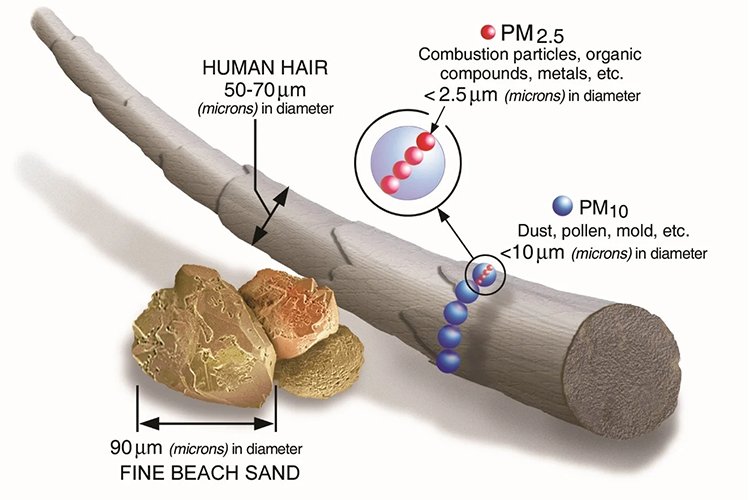Why Do We Use 0.3 Micron Particles as HEPA Filter Testing Dust Standard

HEPA filters are used in various applications, including medical facilities, clean rooms, and other environments requiring stringent air quality standards. According to the he Department of Energy (DOE) standards, HEPA filters must be tested and qualified to ensure they meet the 99.97% efficiency requirement.
DOE has specific standards and regulations regarding the efficiency of air filtration, particularly in the context of high-efficiency particulate air (HEPA) filters. Here's some information of the DOE's standards for air filtration efficiency.
High-Efficiency Particulate Air (HEPA) filters are designed to trap at least 99.97% of particles that are 0.3 microns in diameter. This size is considered the most difficult particle size for HEPA filters to capture, and is referred to as the Most Probable Particle Size for Penetration (MPPS).
Due to Brownian Motion aerodynamic properties, 0.3 microns is the threshold size below which particles are most likely to pass through the filter because of their aerodynamic properties. Therefore, the efficiency of a filter in filtering 0.3 micron particles is a direct reflection of its overall performance, the MPPS is typically around 0.3 microns for most filters. HEPA filters are tested at their MPPS to ensure they provide the highest level of filtration efficiency.
The testing involves challenging the filter with particles of a known size and concentration and measuring the number of particles that pass through the filter. Testing methods usually take the ones of following:
MPPS, as discribed above. HEPA filters are tested by the MPPS to meet the grade of filtration efficiency.
Test Aerosol: Common test aerosols used include sodium chloride (NaCl) and dioctyl phthalate (DOP). These substances produce particles of known sizes that can be used to challenge the filter's efficiency.
Measurement: The efficiency is measured by comparing the concentration of particles upstream and downstream of the filter using particle counters or other appropriate measuring devices.
Facilities such as laboratories, cleanrooms, and medical environments must comply with DOE standards to ensure the highest air quality. These environments often require the use of HEPA filters to maintain contaminant-free air.
In hospitals and clinics and the like healthcare facility, HEPA filters are crucial for preventing the spread of airborne pathogens, particularly in operating rooms, isolation rooms, and other critical areas.
Cleanrooms in industries such as pharmaceuticals, biotechnology, and electronics manufacturing, HEPA filters are essential for maintaining environments free from contaminants that could compromise product integrity.
High-quality air purifiers for residential use often incorporate HEPA filters to improve indoor air quality and reduce allergens, dust, mould, dander and pollutants.
Regular testing and maintenance are required to ensure that filters continue to meet the specified efficiency standards. This includes periodic replacement and certification of filters to maintain compliance with DOE regulations.
ASHRAE 52.2 is the general standard in North America. The American Society of Heating, Refrigerating and Air-Conditioning Engineers (ASHRAE) Standard 52.2 outlines the method for testing and classifying the efficiency of air filters. This standard classifies filters based on their Minimum Efficiency Reporting Value (MERV), which ranges from 1 to 16, with higher numbers indicating better filtration efficiency.
While HEPA filters exceed the MERV rating scale, MERV 16 filters, which are just below HEPA efficiency, can capture particles as small as 0.3 to 1 micron with an efficiency of greater than 95%.
For more detailed information, you can refer to specific documents and resources from the DOE and ASHRAE:
Department of Energy - Office of Energy Efficiency & Renewable Energy
ASHRAE Standard 52.2


